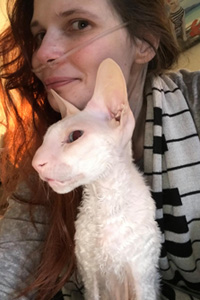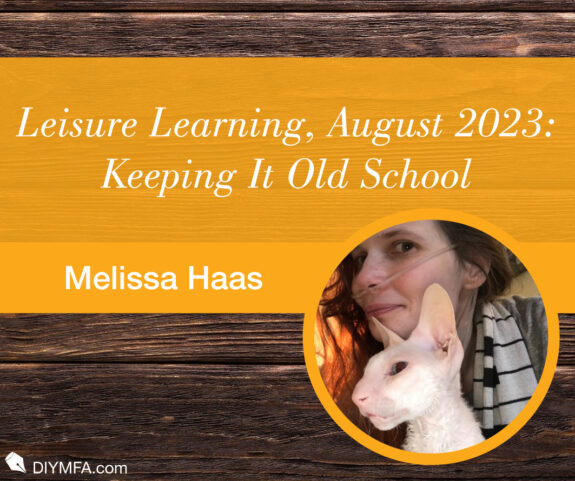Happy Sunday, Leisure Learners!! While school is literally always open here at DIY MFA, September has a special feel for passionate learners like ourselves. That sparkle filled with notebooks and pens and elevated thoughts enters the ether as we put aside the beachy reads and fall in love once again with our most substantial literary projects.
This month’s column focuses on many authors that we were introduced to in school (with facts that are too fun to learn in school) and those elements at the heart of creating something from mere words – desks, handwriting, snarky Jane Austen inspired video games.
Come and embrace the magnificent season where we put on our hardcore word nerd pants and get back to the business of writing like the legends in the links below.
Plot Maps, As Revealed By Authors
Novelists create plot maps for the same reason that architects use blueprints. It’s how authors ensure that everything lines up at the right time, in the right literary place – a way to make sure all of those specific, well-researched details are actually supporting the overall plot. Here, in this article from the Daily Mail, we get a chance to dip into the notebooks of some of the most respected authors who ever put words on paper.
See how Jennifer Egan plotted a story released Tweet by Tweet, who seamlessly integrates swearing at their editor along with scene directions and who could’ve become a serial killer, had he not written Catch 22.
Cursive
Cursive writing is quickly becoming the Latin of our times. In fact, it’s an endangered species within today’s classroom, which saddens me. If you remember hours spent rendering elegant loopy letters, attaching them together curve by curve, then you would be interested in this short article on the history of cursive writing. Find out where this type of penmanship started and how it has shape-shifted over the centuries.
While you’re at it, why not be a steward of the tradition and let your kids in on this secret language of adults? (With the added bonus of potentially rehabbing your penmanship.) Once you’ve digested cursive’s twisted history, head on over to The Postman’s Knock where calligrapher Lindsey Bugbee offers a free, in-depth course aimed specifically at teaching elementary school children how to recreate this delicate art. Spooned out in small increments, this 4 hour course is one of the best on the web for cursive and at exactly $0, totally worth the price.
Besides, won’t it be nice being able to read your own notes once again?
Writing Desks of Famous Authors
Pianoes, bookcases and writing desks are the furnishings that have a tendency to make me swoon. Often when I say this, people think it’s because of the gorgeous woodwork often found adorning these item, and sometimes that is the case. However, with the writing desk in particular, there is a unique dimension to its beauty, one that Neil Gaiman captured precisely when he said, “The writer’s desk is where dreams collide with reality, and ink becomes the thread weaving them together.”
This magic happens on everything from museum quality Queen Anne era desks to simple pieces of leftover plywood. Most of us, including literary legends, have writing spaces that lie somewhere in between these extremes.
Here, in The Journal of Antiques and Collectibles, you can glimpse the writing desks where Charles Dickens, Jane Austen, Mark Twain, and more wrote (and re-wrote) their masterpieces. If you enjoy that perusal, consider following it up with a look into Jill Krementz’s photo collection, The Writer’s Desk, which focuses on the writing spaces of more contemporary authors. What era does your writer-self prefer?
Regardless of what a dedicated writing space looks like, whether the ambience inspires one’s thoughts to take flight or you’re scribbling on your knee, it is at the writer’s desk where words are spun into gold.
First Editions
While investigating writing desks, I stumbled into the realm of literary first editions.
How much would you be willing to pay for a first edition of your favorite book? How much do you think a hand written letter by the author ups the ante?
In these clips from the Antiques Roadshow book appraisers evaluate both The Wonderful Wizard of Oz and The Hobbit.
*WARNING: The Hobbit is not appraised at the eleventeen bajillion dollars I was thinking it would be. However, I still consider eleventeen bajillion USD a fair price, given The Hobbit’s cultural significance.
This weekend, leisurely learn how to identify the marks of first editions, including the differences between US and UK versions, so that you can keep them in mind anytime you’re at a garage sale, thrifting or when that crazy family member begins casting out “useless junk” (yes, some people actually think of books like that).
Has anything like this ever happened to you? Leave a comment that can be appreciated by fellow word nerds below.
Austen Translation
It’s always interesting to see how universal themes can be transformed through the latest tech. Specifically, I’m speaking of when a certain author’s novels cross-pollinate with PCs and Macs.
Austen Translation is a short, narrative based video game , the social mechanics of Jane Austen’s drawing room are brought to life as you play a personally tailored heroine who is vying to land a lucky bachelor.
The experience is essentially that of playing “dinner party with chaperoned outings.” Other women eying potential suitors make sometimes catty, sometimes witty, sometimes charming moves to which you respond by picking an option that will win you points best in line with the bachelor of your choice (though spinsterhood still ensues, but unlike in Jane’s time, this game considers it a win).
Austen Translation is smart, satirical and its overall playtime is pretty quick (~15 mins). With whimsical illustrations inspired by the colors of the English countryside can be played along with any teenager or fellow word nerd. Personally, I enjoyed it much more than I thought I would and I encourage you to spend the $7 on Steam, if only to see how classic literature is being translated into current technology. The interface is simple, the rules can be easily grasped through the tutorial and there is a wit that Jane herself would appreciate.
But how does this format enhance the experiences created by novels written so long ago? For me, I can say that playing Austen Translation did add to my consideration of drawing room dynamics and made me acutely aware of how one’s choices can indirectly affect other players. Moreover, it made me feel the sense of competition Victorian women must have had when trying to land a husband more for practicality than love. I felt that it brought to life the competition for suitors in a way that I haven’t experienced through either book or movie. In case you can’t tell, I can’t say enough about this low-key, surprisingly relaxing game (i.e., even with the competition, the ambience is soothing and damask is abundant). I guarantee you it is the only video game where you can opt to accessorize with a cameo or country mouse, wield a fish knife as a weapon and hear phrases of ribaldry, such as men “…hoping to catch a glimpse of an unguarded ankle.”
P.S. If you’re a fan of casual games, keep your ears out for developer Worthing & Moncrieff, as they specialize in video games for erudite, quirky adults.

Melissa Haas is the author and illustrator of Catula: The Misadventures of Dracula’s Cat and The Night Before Christmas (NOW WITH CATS), among others. Follow Catula’s whereabouts on Instagram @CatulaTheCat. If you’re interested in downloading free coloring pages or seeing Margaret Atwood with a blowtorch, check out more Leisure Learning related content at www.MelissaHaasCreates.com.







